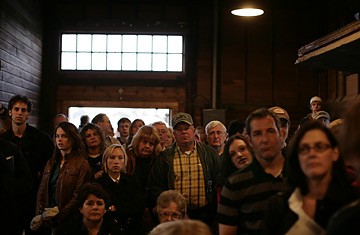
Predicting who will turn up at the Iowa caucuses is an almost futile exercise. About 125,000 people participated in 2004's Democratic contest. This year, predictions range from 120,000 to 200,000 or more. The bigger the turnout, the more likely it is that either Obama or Clinton will win, since first-time caucus-goers make up a huge portion of each candidate's pledged supporters (60% in Hillary's case). The newcomers among Obama's supporters skew young — as in college age — which is a slice of the electorate that has been historically unreliable when it comes to showing up and voting. Will that pattern prove true again? Hillary's supporters tend to be older, and therefore more reliable. The final Des Moines Register poll, which gave Obama a 7-point lead, also predicted an exceptionally strong turnout of 200,000, driven by a big increase in the number of "independents" registering and taking part. If that happens, it will be bad news for John Edwards, who placed a strong second to John Kerry in the 2004 caucuses. Among the most dependable participants — those who caucused in 2004 — Edwards has a distinct advantage. For him, the lower the turnout, the better. On the GOP side, overall turnout will be lower than for the Democrats, probably under 100,000. The lower the number, the more victory will depend on the ability of campaigns to get their supporters to their caucus sites. If organization trumps enthusiasm, Romney will benefit.